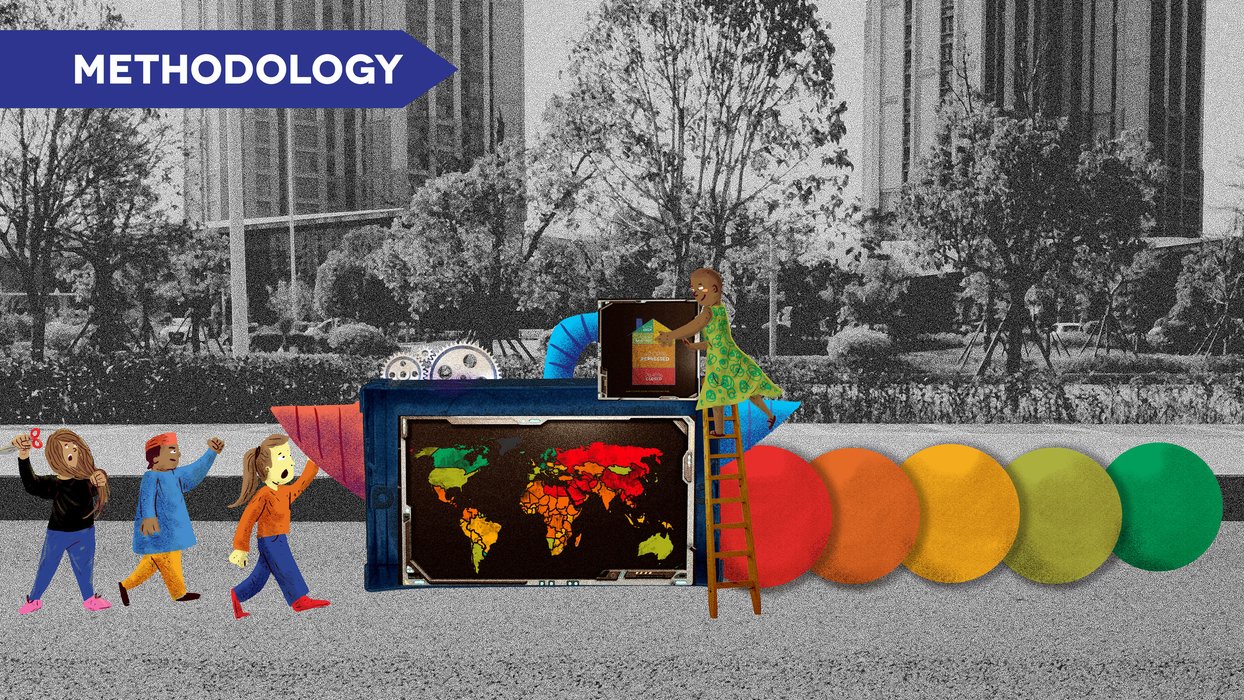Methodology

The CIVICUS Monitor aims to provide a comprehensive assessment of the enabling conditions for civil society within countries and over time. It analyses civic space, defined as the respect in policy, law and practice for freedoms of association, peaceful assembly and expression and the extent to which the state protects these fundamental rights.
In an attempt to capture these dynamics on a global scale, over 20 organisations with research expertise from around the world work on the CIVICUS Monitor with the aim of providing an evidence base for action to improve civic space.
Civic space updates from CIVICUS Monitor research partners contain qualitative, narrative information related to the situation for civic space in a country. This qualitative information is directed by a set of guiding questions and the resulting data is gathered from a variety of primary and secondary sources. In many cases, country-specific updates come directly from national civil society themselves. In countries where there is no research partner, the CIVICUS Monitor relies on a variety of other sources produced at the national, regional and international levels to produce analysis on civic space.
These civic space updates are then triangulated, verified and tagged by the CIVICUS team. The tagging system enables classification of the information included in the updates and analysis of the most common violations and restrictions faced by civil society groups, activists, human rights defenders (HRDs) and journalists when defending their rights as well as positive developments related to civic space.
The research partners collectively posted a total of 493 civic space updates from 1 January 2022 to 31 December 2022. They form the basis for the analysis presented in this report.
In addition to the qualitative information presented in the civic space updates, in order to draw comparisons at the global level and track trends over time, the CIVICUS Monitor produces civic space scores and ratings for 197 countries and territories. Each country’s civic space is rated in one of five categories – open, narrowed, obstructed, repressed, or closed – based on a methodology that combines several sources of data on freedoms of association, peaceful assembly and expression and the state’s duty to protect those fundamental freedoms.
Frequently Asked Questions
HOW DO YOU GET TO THE RATINGS?
At the heart of the CIVICUS Monitor’s methodology is the combination of several independent data sources, comprising both quantitative and qualitative data. These sources include indicators from civil society organisations and reports from national, regional, and international civil society organisations with relevant information on the four indicators of civic space (Freedom of association, freedom of peaceful assembly, freedom of expression and the state duty to protect). These external analyses are then paired with CIVICUS analysis to arrive at a score for all assessed countries and territories. According to the score, each country is categorised as open, narrowed, obstructed, repressed or closed.
DO COUNTRIES WITH THE SAME RATING EXPERIENCE THE SAME CIVIC SPACE CONDITIONS?
Ratings are conceptualised as broad bands, where a variety of civic experiences can exist within any given rating category. The goal of ratings is to offer robust comparisons between countries over time, meanwhile the scores provide more detailed information on the state of civil society freedoms within those broad categories.
HOW OFTEN DO THE GLOBAL RATINGS AND TOP VIOLATIONS GET UPDATED?
Scores underpinning the ratings and the list of top violations are updated annually following the release of the annual report People Power Under Attack.
What freedoms are included in your documentation?
The goal of CIVICUS Monitor is to provide a comprehensive assessment of the conditions for civil society within countries and over time. Civic space is defined as the respect in policy and practice for the freedoms of association, peaceful assembly and expression. The state has a fundamental duty to protect these rights. As the diagram illustrates, the CIVICUS Monitor conceptualises the conditions for civil society as the respect for these four indicators.
How do you measure civic freedoms quantitatively?
The CIVICUS Monitor combines qualitative and quantitative data inputs generated by primary and secondary research.Recognising that indicators used to conceptualise civic space cannot be directly observed or assessed by a single measure, our methodology constructs a composite indicator to provide an overall view of conditions in each country. To do so, we created a fixed scale which establishes the range of the CIVICUS Monitor, i.e. we impose a minimum and a maximum theoretically possible value. This range encompasses a range of completely unrestricted (100) to completely restricted (1) civic spaces. Given that the state of civic space across all countries and territories vary from very restricted to more open, we can be reasonably confident that the range we set up is broad enough to encompass the variety of civic experiences around the world.
Can anyone provide information and data to the Monitor?
Recognising that indicators used to conceptualise civic space cannot be directly observed or assessed by a single measure, our methodology constructs a composite indicator to provide an overall view of conditions in each country. To do so, we created a fixed scale which establishes the range of the CIVICUS Monitor, i.e. we impose a minimum and a maximum theoretically possible value. This range encompasses a range of completely unrestricted (100) to completely restricted (1) civic spaces. Given that the state of civic space across all countries and territories vary from very restricted to more open, we can be reasonably confident that the range we set up is broad enough to encompass the variety of civic experiences around the world.